White Tea Central


"Almost everything about white tea - the rarest of all teas."
Frequently Asked Questions (FAQs)
1. What is white tea?
White tea is the least processed of all tea types. It's made from the handpicked young leaves and buds of the Camellia sinensis plant, harvested at the beginning of the season, and gently dried. This minimal processing results in a delicate flavor and aroma. Traditionally, white tea was a luxury reserved for the Chinese Emperor.
Is white tea organic?
While many white teas are grown organically, not all are certified organic. Look for a certification label if you prefer organic products.
2. How does white tea taste?
White tea taste? It offers a range of flavors, from sweet and floral to grassy and mild. It's known for its subtlety and slightly sweet, silky texture. The flavor profile of white tea is commonly described using a variety of terms that highlight its complex and nuanced nature. These descriptors include floral, grassy, honey, fruity, melon, peach, apricot, vanilla, chocolate, citrus, herby, mild, subtle, delicate, and sweet. This rich palette of flavors makes white tea a versatile and appealing choice for many tea enthusiasts, offering a delicate balance of tastes that cater to a wide range of preferences.


3. How do I brew white tea?
For brewing white tea use about 1-2 teaspoons of tea leaves per cup of water. Heat water to just before boiling (around 175-185°F or 80-85°C) and steep for 4-5 minutes. It is ideal to drink white tea when bought and brewed in the form of loose leaves. It is always recommended that pure or clean water should be used in brewing.
The intake of around 2 to 4 cups daily, as opposed to just one, has numerous health benefits. There is nothing wrong with using the same tea leaves in preparation for more than one cup of tea. Not only is this cost-effective in a monetary sense, but it also allows you to extract all the nutrients in those tea leaves. The important point to note is that the second brewing should take longer than the first one.


Can I make iced white tea?
Absolutely! White tea makes a refreshing iced beverage. Brew as normal, then cool and serve over ice. You might find the subtle flavors of white tea to be particularly refreshing when chilled.
4. What are the health benefits of white tea?
The health benefits of white tea: rich in antioxidants, which can help combat free radicals and support overall health. It's also associated with heart health, improved skin health, and may aid in weight management. Remember, though, that drinking tea should be part of an overall healthy lifestyle.
Does white tea stain teeth?
Yes, even though white tea has a lighter tea liquor it does still stain your teeth.
5. Does white tea contain caffeine?
Contrary to common belief, many white teas can actually have higher caffeine levels than black teas because they contain more tips or buds. Teas that are particularly "tippy," with a high proportion of tips to leaves, tend to have more caffeine compared to those with fewer tips. Additionally, the caffeine content in white tea buds is slightly higher than in green or black tea, which helps safeguard the plant from predators during its early growth stages. However, you can decrease the caffeine content in your cup of white tea by modifying the brewing method.


How long does white tea last?
When stored properly, white tea can last for years. However, for the best flavor and aroma, it's recommended to consume it within one year of purchase.
6. How should I store white tea?
Always store tea in a cool, dark, dry place. Keep your tea away from heat, light, oxygen and moisture, and never store tea in the refrigerator. Tea will last longer if stored in an opaque, airtight container. Don’t let tea share the pantry with items like coffee and spices that can leach their flavor into the tea leaves.


Does white tea have medicinal uses?
White tea has been used medicinally for years, including for its antibacterial effects. It also contains chemicals beneficial in treating depression and anxiety disorders.
7. What makes white tea different from green or black tea?
One of the most significant factors that distinguish the processing of various teas is harvesting and oxidation, which refers to the duration tea leaves are exposed to oxygen after being harvested. The longer the exposure, the darker the leaves become, resulting in a richer and deeper flavor profile. Tea masters employ a variety of techniques during the processing stage to manage oxidation effectively. These methods include rolling, shaping, or crushing the leaves to accelerate oxidation, as well as applying heat through steaming, firing, or roasting to halt the oxidation process. This meticulous control over oxidation allows for the creation of a wide spectrum of tea types, each with its unique taste and characteristics.


Can white tea be flavored?
Yes, while white tea has a naturally subtle and sweet taste, it can be flavored for those who find its taste too mild. Flavored white teas are available for a variety of taste preferences.
8. How is white tea made?
Harvesting: White tea is made from handpicked, delicate buds and the youngest leaves of the tea plant (Camellia sinensis).
Withering: After harvesting, the selected tea leaves and buds undergo a crucial withering process, allowing them to naturally wither under the sun or in a controlled indoor environment to enhance flavor and reduce moisture.
Drying: The withered tea leaves are carefully dried using low heat to preserve their natural state and delicate flavors.




10. Where is white tea cultivated?
White tea originated in China, with the earliest references dating back to the Song Dynasty (960–1279). It was initially produced in the Fujian province, a tradition that continues to this day. It primarily originates from the Fujian province in China, but it is also cultivated in other parts of the world (India, Sri Lanka, and Nepal). Within the Fujian province, there are two main areas known for growing white tea: Fuding and Zhenghe.


What are the different types of white tea?
From Fujian: 1. Yin Zhen Bai Hao (Silver Needle), 2. Bai Mu Dan (White Peony), 3. Gongmei (Tribute Eyebrow), 4. Shou Mei (Long Life Eyebrow) and Fujian New Craft (DaBaiCha or DaHoaCha).
11. What are the 6 basic types of tea?
Black Tea: Fully oxidized, black tea offers a darker color and richer flavor than other types. The oxidation process transforms the green leaves into a deep black color, resulting in a strong, bold taste. Famous black teas include Assam, Darjeeling, and Earl Grey.
Oolong Tea: Oolong tea is partially oxidized, placing it between green and black teas in terms of color and taste. The oxidation level can vary greatly, resulting in a wide range of flavors and aromas. Oolong teas are often characterized by their floral or fruity qualities, with Tieguanyin and Da Hong Pao being notable examples.
Green Tea: This type undergoes minimal oxidation during processing. The leaves are quickly heated after picking to prevent oxidation, preserving their natural green color and producing a fresh, light flavor profile. Common green teas include Sencha from Japan and Longjing from China.
Yellow Tea: Similar to green tea but with a slower drying phase, yellow tea undergoes a light fermentation process. This extra step gives the tea a slightly milder flavor than green tea and a characteristic yellow hue. Yellow tea is less common and includes varieties like Junshan Yinzhen and Meng Ding Huangya.
Pu-erh Tea: A type of fermented tea that can be made from green or black tea leaves. Pu-erh undergoes a microbial fermentation process after drying and rolling, which can last from months to many years. This tea is known for its earthy flavor and is often compressed into cakes or bricks. Pu-erh tea is believed to have health benefits, including aiding digestion.
White Tea: The least processed of all teas, white tea is made from young leaves and buds that are allowed to wither and dry in natural sunlight before minimal processing. This tea is known for its delicate, sweet flavor and light color. Examples include Silver Needle and White Peony.


Top 10 White Tea Producing Regions


Jingmai Mountain (Yunnan Province):
This mountain hosts the largest collection of tea production in the world. With over a million tea trees, including some of the oldest wild tea trees in China, Jingmai Mountain is a white tea haven. You can explore tea farms, factories, and shops here, and if you’re lucky, experience a traditional tea ceremony featuring pu’er tea.

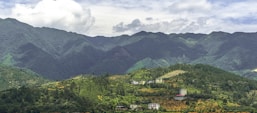
Zhangjiajie (Hunan Province):
Nestled in the shadows of the jagged, column-shaped sandstone Zhangjiajie mountains, tea farmers diligently pluck tea leaves from the vines. The warm, temperate climate in this misty region contributes to the tea’s growth.


Sichuan Province:
Known for its humid climate, Sichuan is ideal for tea production. The tea farms here might even resemble rice paddies from a distance. The popular tea styles in Sichuan include green and black teas.


Fujian Province:
Located on the southeast coast, Fujian has been refining its tea techniques since the Song Dynasty. The area is celebrated for its high-quality teas, particularly oolong and white varieties.
Darjeeling, India:
The Darjeeling highlands in India are renowned for their delicate, subtle teas. White tea from Darjeeling offers a unique flavor profile due to the region’s terroir and altitude.
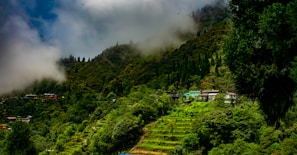
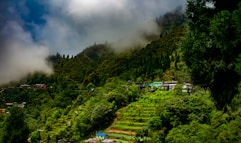
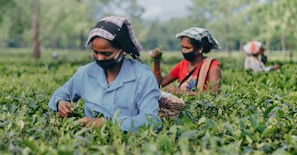
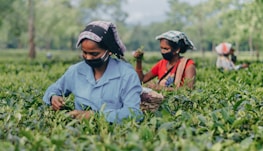
Assam, India:
Assam, known for its robust black teas, also produces white tea. The fertile plains and favorable climate contribute to the quality of Assam’s tea.
Sri Lanka (Ceylon):
The mist-covered hills of Sri Lanka contribute to the unique flavor profiles of their teas, including white varieties. Sri Lanka is often referred to as the “Jewel in the Tea Crown” for its diverse tea production.
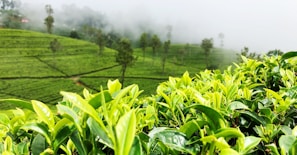
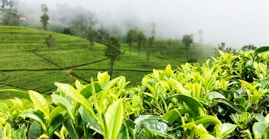
Taiwan:
Although not part of mainland China, Taiwan specializes in oolong tea and produces exceptional white teas as well. The island’s unique terroir contributes to its tea’s distinct flavors.
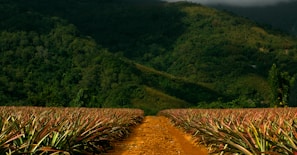
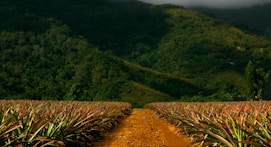
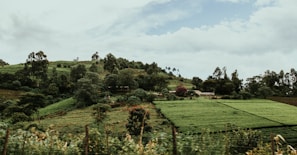
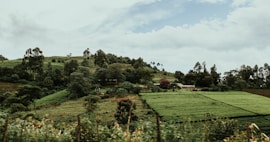
Kenya:
Kenya, primarily known for black tea, also produces white tea. Its tea farms contribute significantly to the African tea landscape, making it a top exporter of black tea.
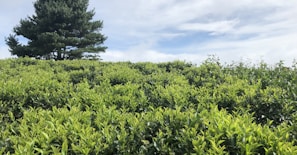
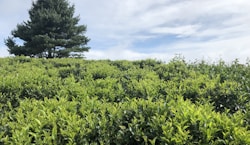
Nepal:
Although not as well-known as other tea-producing countries, Nepal has been gaining recognition for its high-altitude tea farms. The Mist Valley Teas from Nepal are exported to various countries, including China, the US, and France.





